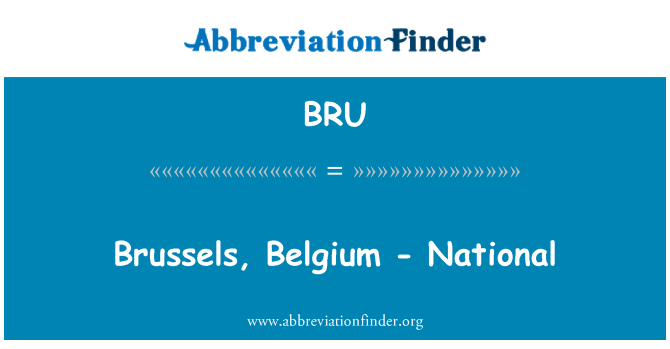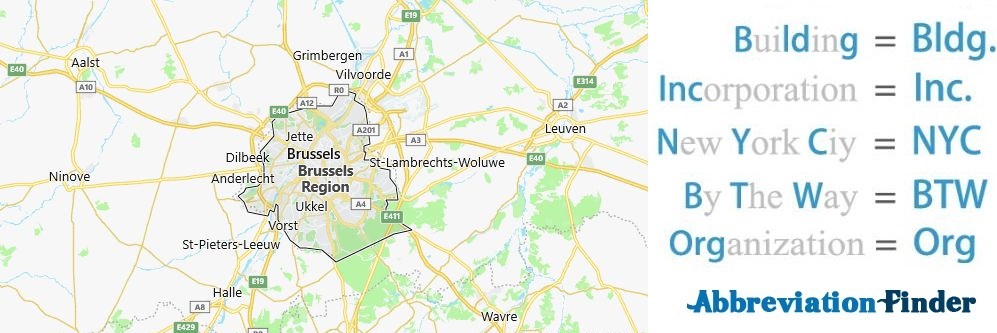Brussels
Brussels is both the capital of Belgium and Europe. With its long history under the rule of foreign nations, including Roman, Spanish and Germanic, Brussels is well equipped to represent Europe.
Brussels is today the seat of the Council of Europe and the European Commission. In addition, Brussels houses EUROCONTROL, the European Aviation Safety Organization, and not least NATO. This does not mean that Brussels is a boring, institutional city with only bureaucrats and lobbyists.
The city of Brussels is known for its great sights and prominent art nouveau architecture. Brussels is also the comic city above some. Today, there are hundreds of active cartoonists and cartoonists based in Brussels. The town has its own cartoon museum, and its inhabitants know how to appreciate a good storyteller.
Let us also take into account that Brussels is known as a gourmet city. It is teeming with very good quality restaurants, regardless of the price level, something both tourists from all over Belgium know to appreciate. In addition, you will find many cozy shopping streets. For children, the city is a find with its attractions, parks and large amounts of chocolate. Belgians love famous chocolate and you will find the country’s best chocolate in Brussels.
In addition to what you have now been told, Brussels is perfectly located for day trips to other great cities and sights. We are absolutely sure that you will be pleasantly surprised by Brussels.
Get to know Brussels
The historic center of Brussels is old. The city’s origins date from the late 900s. From the 1100s, Brussels became an important stop on the trade route from Cologne in Germany to the port city of Bruges in Belgium. However, Brussels did not have many inhabitants at that time.
However, the fate of Brussels changed dramatically in the early 1800s. The people revolutionized the Dutch occupation and proclaimed Brussels as the capital of an independent Belgian kingdom.
Over a hundred-year period, the population of Brussels doubled.
City Profile
- Abbreviation: BRU
- Country: Belgium
The Brussels region
The Brussels region consists of 19 districts, from Laeken in the north, Anderlecht in the west, Woluwe in the east and Boisfort in the south. The city of Brussels itself constitutes one of these 19 districts, and it is naturally located centrally in the region. Central Brussels consists of nine quarters or areas. If we follow the clock from the north, these quarters are called Libertés, Royal, Sablon, Marolles, Midi-Lemonier, Senne, Quais, Marais-Jacqmain and Center.
For a long weekend it will be more than enough to concentrate on the city of Brussels itself and not the Brussels region. Click here for detailed map.
Brussels historic center and Ilot Sacre (holy island)
The historic center is filled to the brim with sights, parks, shopping streets, restaurants and other things that make you as a visitor stay in a good mood. Just west of the main train station and the main subway station you will find the Grand Place, which everyone visits, which in turn gives all visitors a positive impression. The area surrounding the Grand Place is called Ilot Sacre.
The whole city center is of course the Grand Place. The square is a mix of Gothic architecture, Renaissance and Baroque architecture. At the square stands the town hall with its 96 meter high Gothic tower in addition to the King’s house and the laughs. The king’s house, despite its name, has never been inhabited by kings. Today you will find the Brussels City Museum here. This magnificent building was renovated in the 18th century and now appears in a neo-Gothic style.
Right next to the Grand Place you will find Manneken Pis, which many tourists are looking for. It is at the junction of Rue de L’Etuve and Rue du Chene.
Just west of Grand Place is the Brussels Stock Exchange. It is a beautiful neoclassical building from 1873. A few hundred meters further north is Brussels Opera (Théatre de la Monnaie), but for many it is more important to know that this is also the start of one of the most visited shopping streets in Brussels, namely Rue Neuve. Just follow Boulevard Anspach north from the stock exchange.
Northeast of Grand Place is the butcher’s street, Rue des Bouchers, where you will find all kinds of restaurants. Crossing this street, you will reach Brussels’ world famous shopping arcades.
Brussels North – Place du Congres and Quartier des Libertes
If you like Paris, then you will love this area. North in the center you will find among other things the botanical garden and the large congress square. For visits to the Botanical Gardens it is easiest to take the metro all the way, ie to the Botanique station.
For walks it is okay to start at the large park Parc du Brussels, located just east of the main train station, and walk north along the Rue Royale street. At the north end of the Parc du Brussels you will also see the National Palace.
You are now in the Libertes neighborhood and will quickly reach the Place des Libertes, which was created in honor of Belgium’s independence in 1830. The area is perhaps the most important city in Brussels in terms of theater, opera and cultural events. Take the bus or tram, line 48, 52 or 54 to Forest National, which is Belgium’s largest theater.
Also, take the Rue Royal-Congrés street to experience concerts, performances, exhibitions and more. A little south of Place des Libertes you will find the Royal Circus. Here are musicals and circus performances throughout the year.
Brussels south, Sablon and the royal palace
At the south end of the Parc du Brussels are the royal palace and castle square, Le Palais royal de Brussels and La place Royale. Click here for a virtual tour around the castle and the castle grounds.
Close to the castle you will find Belgium’s most beautiful modern art museum, the Museums royaux des Beaux-Arts de Belgique. A central street in the area is Rue de la Regence, which runs south from the castle. This street has many beautiful buildings and leads you to Egmont Palace and Lady Sablon Church.
This area is dominated by the famous Avenue Louise, which not least represents the shopping opportunities in Brussels city with its exclusive fashion boutiques. You can take the subway to Louise station or follow Boulevard Waterloo up or down.
Just off Avenue Louise is the Egmont Palace with its beautiful garden, well worth a visit. The garden has 40 bronze statues representing the old medieval barns in Brussels. Here is also the magnificent Gothic church Lady Sablon, which dates from the 15th century.
The EU district – Brussels East In the
east of Brussels you will find the EU district with its bureaucratic buildings. The area is naturally characterized by this. This is where business people, top bureaucrats and politicians rush by. The embassies are also in this area.
We recommend that you go here to visit the great natural science museum, the Institut royal des Sciences naturelles de Belgique, not least because of the museum’s dinosaur exhibition.
The museum is open at 0930-1645 on weekdays (not Monday) and at 1000–1800 on weekends. The address is Rue Vautier 29.
The EU quarter offers good opportunities to relax, as it is surrounded by several beautiful parks, eg. The Parc de Brussels, the Parc du Cinquantenaire and the great Leopold Park. The European Parliament is open to the public if you want to have a look. If there is a hearing in Parliament, you can get earphones with simultaneous translation of what is being said. The main streets in the area are Rue de la Loi and Rue Belliard.
Sacre-Coeur and Heysel – Brussels West
In the district of Koekelberg (northwest) at the end of the Leopold II street you will find the Sacre-Coeur basilica. This Art Deco Cathedral is just beaten by St. Peter’s Cathedral in Rome, the Duomo in Florence and St. Paul’s Cathedral in London in terms of size.
The Sacre-Coeur is more than 140 meters long and has a dome that extends 90 meters above the ground. We suggest you pay entrance fees to go to the top. Here you get a great view of Brussels.
If you travel to the Heysel Park or Expo area, also known as Atomium, you will find Atomium. Atomium is an atom magnified infinitely many times and appears as a 103 meter high monument. It is possible to go up to the top for a fantastic view.
Right at the Atomium is Bruparck, and this area is the entertainment center for children of all ages. Here you will find Mini Europe, which has reconstructions of the 300 most famous sights in our continent. You have a tropical water park where you can swim around in 30 degree water all year round. And not least you have Belgium’s largest cinema complex with 29 different cinemas.
Public transport in Brussels
Brussels has five main train stations in the city center. Public transport is well developed. There are three underground lines (1A, 1B and 2). In addition, there are six tram lines and a total of 46 bus lines. Always remember to stamp your ticket before you begin your journey.
Facts about Brussels
Brussels is the capital of Belgium and its three federal regions. Brussels, Brussels and Brussels are the three official names of the city. Brussels is naturally the largest and most populous city in Belgium.
| Population | About. 1.14 million inhabitants |
| Official languages | French, Dutch (Flemish) and German. |
| Control Form | monarchy |
| Religion | Roman Catholic (75%) |
| Time Difference | No |
| Currency | Euro. 1 euro is equivalent to about 8 Norwegian kroner. Most credit cards (Visa, Master, Diners, AmEx) are accepted in most places. ATMs are available almost everywhere. |
| Tips | Service is often included in the bill, both in taxis and in some restaurants and pubs. You choose to give tips based on how satisfied you are with the service. |
| Embassy | The Norwegian Embassy is located at Rue Archimede 17, B-1000 Brussels. Tel: +32 2 646 0780 |
| Tourist | In the Town Hall on Grand Place. |
| Telephone | 32 |
| Emergency | 112. Police 101. Fire and ambulance 100 |
| Electricity | 220 volts, the same two-pin contact system as in Norway. |
| Holidays and Holidays | 1st January, 1st and 2nd Easter Day, May 1st, Ascension, 2nd Pentecost, July 21st (National Day), August 15th (Mary Ascension), November 1st (All Saints Day), November 11th (Armistice 1918 ), 1st Christmas Day. |
| Visa | Not required for Norwegians. |
| Vaccinations | No vaccines are required |
| Water | Can be easily drunk from the tap |
| Nearest major cities | Ghent, Bruges, Antwerp, Liège |
| Safety | Generally little crime of violence, but pay attention to pickpockets in crowds. NB! Brussels has areas that are considered unsafe and there have been terrorist attacks in the city in recent times. |

List of Brussels Acronyms
The most commonly used abbreviations about Brussels is BRU which stands for Brussels. In the following table, you can see all acronyms related to Brussels, including abbreviations for airport, city, school, port, government, and etc.


